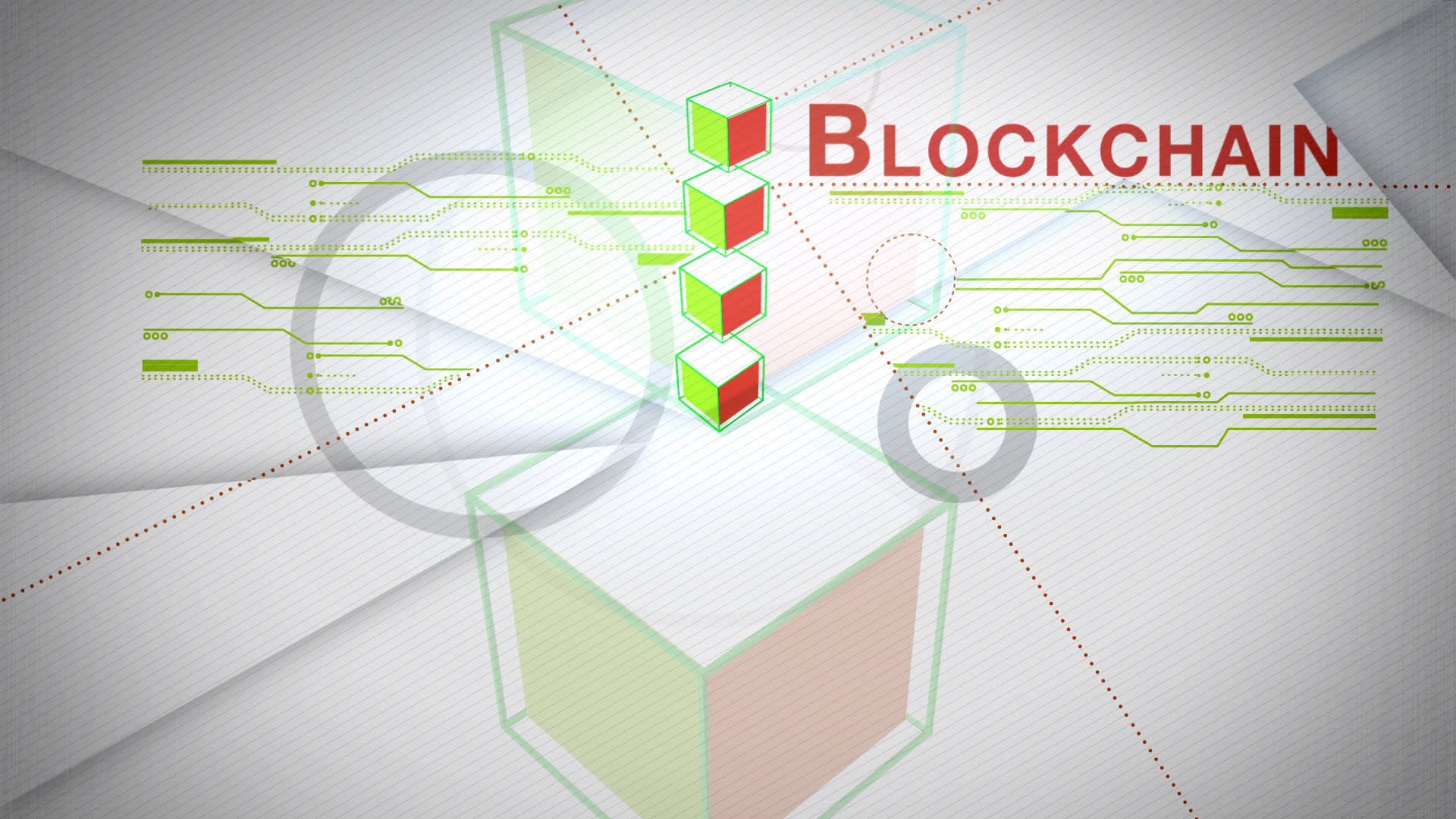Introduction
Blockchain technology has revolutionized the world of finance and beyond, bringing transparency, security, and efficiency to various industries. One key component of blockchain technology is the ledger, which serves as a decentralized database where transactions are recorded. Ledger blockchains are at the core of this technology and play a pivotal role in ensuring the integrity and immutability of data. In this article, we will explore the concept of a ledger blockchain, its operation, benefits, and examples of its implementation in various sectors.
Before delving into the intricacies of a ledger blockchain, it is essential to have a clear understanding of what a ledger is and its significance in the context of blockchain technology. In simple terms, a ledger is a record-keeping system that tracks and stores transactions or information. Traditionally, ledgers were centralized, meaning they were controlled by a central authority or organization. However, with the advent of blockchain technology, a distributed ledger system emerged, which allows multiple parties to have access to and validate the transactions independently.
On the other hand, a blockchain is a chain of interconnected blocks, where each block contains a set of transactions or data. These blocks are linked together using cryptographic hashes, forming a chain that ensures the security and immutability of the information stored within. A ledger blockchain is essentially a decentralized and transparent ledger system that operates on a blockchain network.
What is a Ledger
A ledger is a record-keeping mechanism that tracks and stores transactions or data. It serves as the backbone of financial systems, providing a detailed account of all financial activities within an organization. Traditionally, ledgers were paper-based or stored in centralized databases controlled by a central authority. However, with the advent of blockchain technology, ledgers have evolved into distributed and decentralized systems.
In essence, a ledger acts as a chronological log of all transactions, including the parties involved, transaction details, and any associated metadata. It ensures transparency and accountability by providing a clear trail of how funds or assets are exchanged or transferred. The ledger can be accessed and updated by multiple participants simultaneously, without the need for a central authority to validate or authorize transactions. This decentralized nature of ledgers eliminates the risks associated with single points of failure and tampering, enhancing the security and trustworthiness of the system.
Ledgers can be classified into various types based on their purpose and implementation. General ledgers, for instance, capture all financial transactions within an organization, including revenue, expenses, assets, and liabilities. Sub-ledgers, on the other hand, focus on specific areas, such as accounts receivable or accounts payable, providing a more detailed breakdown of transactions within those categories. The granularity of a ledger depends on the specific needs and requirements of the organization.
As technology continues to evolve, ledgers have transitioned from physical books to digital formats. With the rise of blockchain technology, ledgers are now stored and maintained on distributed networks, ensuring transparency, trust, and efficiency. Cryptographic algorithms secure the integrity of the ledger, making it virtually impossible to alter or manipulate past transactions. Additionally, the distributed nature of ledger blockchains reduces the risks associated with data loss or corruption, as copies of the ledger are stored across multiple nodes within the network.
What is a Blockchain
A blockchain is a revolutionary technology that enables the secure, transparent, and decentralized storage and transfer of digital information. It is essentially a continuously growing chain of interconnected blocks, each containing a set of transactions or data. What sets blockchain apart from traditional databases is its distributed nature and the use of cryptographic algorithms for data integrity and security.
At its core, a blockchain functions as a decentralized ledger, providing a transparent and immutable record of all transactions or data stored within it. Unlike traditional centralized systems, there is no single entity that controls or manages the blockchain. Instead, it operates on a peer-to-peer network, where multiple participants, known as nodes, validate and maintain the integrity of the information.
The transactional data within a blockchain is organized into blocks, which are linked together using cryptographic hashes. Each block contains a reference to the previous block, creating a chain of blocks. This reference ensures the integrity of the blockchain, as any modification to a block would require altering all subsequent blocks, making it computationally infeasible and highly secure.
One of the key characteristics of a blockchain is transparency. The blockchain ledger is visible to all participants within the network, allowing for real-time verification and auditing of transactions. This transparency enhances trust and accountability, as each transaction can be traced back to its origin.
Blockchain technology also provides immutability, meaning that once a transaction or data is recorded on the blockchain, it becomes almost impossible to modify or delete it. This is achieved through the use of cryptographic algorithms that ensure the integrity of the data. Immutability is a critical feature for applications such as financial transactions, supply chain management, and healthcare records, where data integrity is of utmost importance.
Furthermore, the decentralized nature of blockchain technology eliminates the need for intermediaries or third parties to validate or authorize transactions, reducing costs and increasing the speed of transactions. This peer-to-peer network allows for direct interaction between participants, enhancing efficiency and eliminating unnecessary delays.
How does a Ledger Blockchain work
A ledger blockchain operates on a decentralized network of nodes that work together to validate and record transactions. The process begins when a participant initiates a transaction, which is broadcasted to the network. The transaction contains relevant information, such as the sender, recipient, and the digital assets being transferred.
The network nodes then compete to validate the transaction by solving complex mathematical puzzles. This process, known as consensus, ensures that all nodes agree on the validity and order of transactions. The most commonly used consensus mechanism in ledger blockchains is Proof of Work (PoW), where nodes must perform intensive computational tasks to validate a block. Once a consensus is reached and the block is validated, it is added to the blockchain and becomes a permanent part of its history.
Throughout this process, the ledger blockchain benefits from the transparency and security features of the underlying blockchain technology. The cryptographic hashes that link the blocks together guarantee the integrity and immutability of the recorded transactions. Moreover, the distributed nature of the network prevents a single point of failure, making the ledger resilient to hacking or data loss.
Ledger blockchains also implement advanced encryption techniques to secure the privacy of sensitive data. While the transactions are visible to all participants in the network, the identities of the transacting parties can remain anonymous or pseudonymous, depending on the specific blockchain implementation.
Once a transaction is recorded on the ledger blockchain, it becomes a permanent and auditable record. Participants can access the ledger at any time to verify the history of transactions and ensure the validity of the recorded data. This transparency and auditability are especially valuable in sectors such as supply chain management, where verifying the origin and authenticity of products is crucial.
In order to maintain the integrity of the ledger blockchain, nodes continuously work to validate transactions and secure the network. This decentralized approach ensures that no single entity has complete control over the ledger, enhancing trust and preventing the possibility of data manipulation or corruption.
Overall, the workings of a ledger blockchain involve a combination of cryptographic algorithms, consensus mechanisms, decentralized validation, and transparency, all working together to create a secure and efficient record-keeping system. This technology has the potential to transform various industries by providing a trusted and tamper-proof foundation for storing and managing digital assets and transactions.
Benefits of Ledger Blockchains
Ledger blockchains offer numerous benefits that make them highly advantageous for various industries and applications. Here are some key advantages of utilizing ledger blockchains:
- Transparency: Ledger blockchains provide a transparent and auditable record of all transactions. Participants can access the ledger and verify the history of transactions, ensuring trust and accountability.
- Security: The cryptographic algorithms used in ledger blockchains ensure the integrity and immutability of the recorded data. The decentralized nature of the network prevents a single point of failure and makes it highly resistant to hacking or data tampering.
- Efficiency: Ledger blockchains eliminate the need for intermediaries or third parties, reducing costs and increasing the speed of transactions. Participants can engage in direct peer-to-peer interactions, eliminating unnecessary delays and streamlining processes.
- Traceability: Ledger blockchains enable traceability of assets, products, or transactions. This is especially valuable in supply chain management, as it allows for verifying the origin, authenticity, and journey of goods, thereby reducing fraud and improving trust.
- Privacy: While ledger blockchains maintain transparency, they can also preserve the privacy of participants. By using encryption techniques and pseudonymous identities, confidentiality can be maintained while still ensuring the integrity of the ledger.
- Decentralization: Ledger blockchains operate on a decentralized network of nodes, eliminating the reliance on a central authority. This prevents single points of failure and enhances resilience and trust in the system.
- Immutable Records: Once a transaction is recorded on the ledger blockchain, it becomes a permanent and tamper-proof record. This ensures the authenticity and longevity of data, making it valuable for auditing and compliance purposes.
- Cross-Border Transactions: Ledger blockchains enable seamless and secure cross-border transactions without the need for intermediaries or traditional banking systems. This can significantly reduce costs and speed up international payments.
Overall, ledger blockchains offer a plethora of benefits, ranging from increased security and efficiency to transparency and traceability. Their potential to transform the way industries function is immense, as they provide a decentralized, reliable, and tamper-proof framework for recording and managing transactions and digital assets.
Common Types of Ledger Blockchains
Ledger blockchains come in various forms, each catering to specific needs and use cases. Here are some common types of ledger blockchains:
- Public Blockchains: Public blockchains are open to anyone and allow for decentralized participation. They are maintained by a network of anonymous nodes and provide a high level of transparency and security. Examples of public blockchains include Bitcoin and Ethereum.
- Private Blockchains: Private blockchains are restricted to a specific group of participants who are granted access by a central authority. They maintain the benefits of blockchain technology, such as immutability and security, but with controlled visibility. Private blockchains are commonly used in enterprise applications that require privacy and a permissioned network.
- Consortium Blockchains: Consortium blockchains are a hybrid between public and private blockchains. They are governed by a group or consortium of organizations that collectively maintain the blockchain network. Consortium blockchains offer a balance between openness and privacy, making them suitable for industries where multiple entities collaborate, such as supply chain management.
- Permissioned Blockchains: Permissioned blockchains require participants to obtain permission from a central authority to join the network and validate transactions. They provide higher privacy and control compared to public blockchains but are not as restricted as private blockchains. Permissioned blockchains are commonly used in enterprises or government applications that necessitate controlled access and a certain level of trust among participants.
- Federated Blockchains: Federated blockchains are a variation of private blockchains where the consensus process is controlled by a limited number of trusted nodes. These nodes are typically selected from a group of predefined organizations. Federated blockchains offer enhanced scalability and can handle a higher transaction volume compared to fully decentralized networks.
- Hybrid Blockchains: Hybrid blockchains combine elements of different types of blockchains to cater to specific needs. It could be a combination of public and private blockchains or a mix of permissioned and permissionless functionality. Hybrid blockchains offer flexibility and customization, allowing organizations to leverage the benefits of different blockchain architectures.
The choice of the type of ledger blockchain depends on factors such as the desired level of privacy, the number of participants, the need for decentralization, and the specific use case. By understanding the different types of ledger blockchains, organizations can select the most suitable architecture to meet their requirements and leverage the advantages of blockchain technology.
Examples of Ledger Blockchains
Ledger blockchains have gained significant traction in various industries and have been implemented in a range of real-world applications. Here are a few examples of ledger blockchains in action:
- Bitcoin: Bitcoin is the first and most well-known implementation of a public ledger blockchain. It operates as a decentralized digital currency, allowing for peer-to-peer transactions without the need for intermediaries. Bitcoin’s blockchain maintains a record of all transactions, ensuring transparency and security in the transfer of digital assets.
- Ethereum: Ethereum is a decentralized platform with its own cryptocurrency called Ether (ETH). It utilizes a public ledger blockchain to enable the creation and execution of smart contracts. Ethereum’s blockchain allows for the development and deployment of decentralized applications (DApps) and has become a go-to platform for creating innovative blockchain-based solutions.
- Hyperledger Fabric: Hyperledger Fabric is a permissioned blockchain framework that is designed for enterprise use cases. It offers a modular architecture, enabling organizations to create and deploy private, permissioned ledger networks. Hyperledger Fabric provides control over confidentiality, scalability, and flexibility, making it suitable for various industries, including supply chain management and financial services.
- Ripple: Ripple is a blockchain-based payment protocol that aims to revolutionize cross-border transactions. It utilizes a decentralized ledger to enable fast and low-cost international money transfers. Ripple’s blockchain technology enhances the speed and efficiency of transactions by eliminating intermediaries and simplifying the settlement process for financial institutions.
- VeChain: VeChain is a blockchain platform that focuses on supply chain management and product authenticity. It employs a public ledger blockchain to track and verify the origin, quality, and authenticity of products throughout the supply chain. VeChain’s blockchain technology enables transparency, traceability, and anti-counterfeiting measures, thereby building trust among consumers and businesses.
- Corda: Corda is a permissioned blockchain platform specifically designed for financial institutions. It provides a distributed ledger that allows participants to record, manage, and automate financial agreements and transactions. Corda focuses on privacy, regulatory compliance, and seamless integration with existing systems, making it well-suited for the complex requirements of the financial industry.
These examples represent the diverse applications of ledger blockchains across different sectors. From digital currencies to supply chain management and enterprise solutions, the potential of ledger blockchains is vast and continues to expand as organizations recognize the benefits of this technology.
Conclusion
Ledger blockchains have revolutionized the way we record, store, and verify transactions and data. These decentralized and transparent ledger systems have introduced a new level of trust, security, and efficiency across various industries. From financial services to supply chain management, ledger blockchains have proven to be invaluable tools for enhancing transparency, reducing costs, and ensuring data integrity.
The concept of ledger blockchains relies on the use of distributed networks and cryptographic algorithms to maintain a tamper-proof and auditable record of transactions. Through consensus mechanisms and cryptographic hashing, ledger blockchains achieve a high level of security and immutability, ensuring that once a transaction is recorded, it becomes a permanent part of the blockchain’s history.
The benefits of ledger blockchains are numerous. By providing transparency and traceability, ledger blockchains enable participants to verify the integrity and authenticity of transactions and data. This level of transparency enhances trust and accountability, making ledger blockchains particularly suitable for industries that require a reliable and auditable record, such as supply chain management and financial services.
Moreover, ledger blockchains offer improved security and privacy. The decentralized nature of these systems eliminates single points of failure and makes them highly resilient to hacking or data tampering. Additionally, while ledger blockchains maintain transparency, they can also ensure the privacy of participants through encryption and pseudonymous identities.
Examples of ledger blockchains like Bitcoin, Ethereum, Hyperledger Fabric, Ripple, VeChain, and Corda demonstrate the wide range of applications for this technology. From digital currencies to supply chain management platforms and enterprise solutions, ledger blockchains have the potential to revolutionize various industries by streamlining processes, reducing costs, and increasing efficiency.
As blockchain technology continues to evolve, ledger blockchains will play a crucial role in shaping the future of digital transactions and data management. The scalability, interoperability, and customization of ledger blockchains will unlock new opportunities while addressing the unique requirements of different industries.
In conclusion, ledger blockchains have proven to be a game-changer, offering a secure and transparent platform for recording transactions and data. With their ability to foster trust, enhance security, and drive efficiency, ledger blockchains have the potential to transform the way businesses operate and interact in the digital world.

























